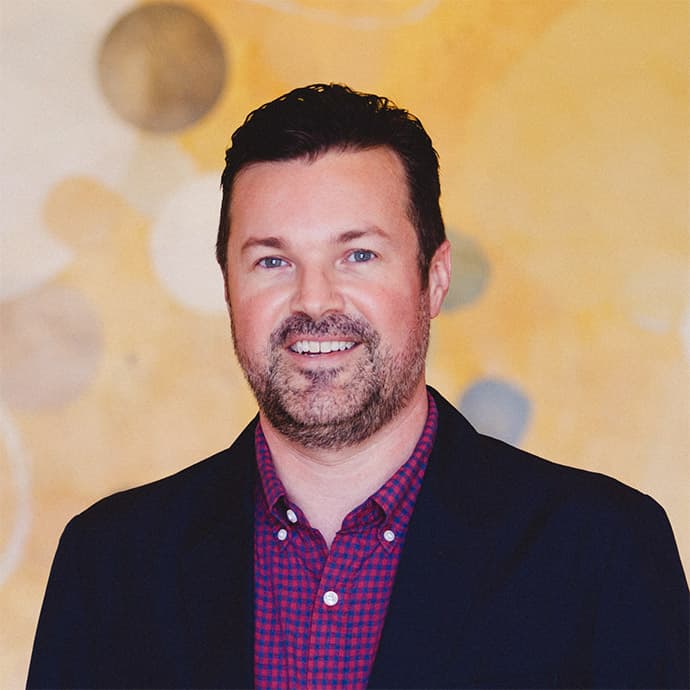Facts & Information About Salvia Divinorum



Cassandra Keuma is a Licensed Practical Counselor Candidate. She has her Master of Arts in Clinical Mental Health and is also a 500 hour certified Yoga Therapist.

Dr. Scot Thomas received his medical degree from the University of California, San Diego School of Medicine. During his medical studies, Dr. Thomas saw firsthand the multitude of lives impacted by struggles with substance abuse and addiction, motivating him to seek a clinical psychiatry preceptorship at the San Diego VA Hospital’s Inpatient Alcohol and Drug Treatment Program.




Cassandra Keuma is a Licensed Practical Counselor Candidate. She has her Master of Arts in Clinical Mental Health and is also a 500 hour certified Yoga Therapist.

Dr. Scot Thomas received his medical degree from the University of California, San Diego School of Medicine. During his medical studies, Dr. Thomas saw firsthand the multitude of lives impacted by struggles with substance abuse and addiction, motivating him to seek a clinical psychiatry preceptorship at the San Diego VA Hospital’s Inpatient Alcohol and Drug Treatment Program.
Salvia is an herb in the mint family that is indigenous to Oaxaca, Mexico.1,2 It has traditionally been used ceremoniously. In more recent years, however, it has begun to be used recreationally. Its hallucinogenic effects have a rapid onset and can last several minutes to several hours. Little is known about long-term effects, withdrawal, or addiction to salvia.
What Is Salvia?
Salvia is the street name for Salvia divinorum, a perennial herb in the mint family with hallucinogenic properties.1,2 The indigenous people of the Mazatec region of Oaxaca, Mexico also refer to it as the divine sage.4
Salvia is native to the Sierra Mazateca mountain region of southern Mexico.1 For centuries, the Mazatec people have used salvia divinorum as a medicinal herb. It is used as a part of their sacred religious and ceremonial practices. They use it under the strict guidance and supervision of a community healer.4
Although salvia is native to the Mazatec region of Mexico, it is now also cultivated in the United States.3 Salvia is readily available to recreational users online and in local shops.1,7 Although salvia is considered to be one of the most potent hallucinogens, it is often marketed as a legal alternative to other hallucinogens.1,2
Recreationally, the most common method of using the drug is to smoke the dried leaves in a pipe, bong, or cigarette paper.1,2,3 When used for medicinal and ceremonial purposes, the Mazatec people collect fresh salvia divinorum leaves and either tightly roll the leaves into a cigar-shaped bundle that is then sucked on or chewed or grind the leaves to infuse a liquid that the person drinks.2,4
According to the 2015 National Survey on Drug Use and Health, approximately 5.1 million people age 12 and older had used salvia at least once in their lifetime, or 1.9% of this population.5 Studies indicate that patterns of salvia use differ from the social or recreational patterns seen with many other drugs of abuse. Salvia use tends to be much more isolated and experimental. In one study, of those that tried salvia, half expressed no desire to use the herb again.2
Street Names
Some common street names for salvia include:1,2,3
- Maria Pastora.
- Leaves of Mary.
- Sally-D.
- Lady Salvia.
- Magic Mint.
- Purple Sticky.
- Sage of the Seers.
- Diviner’s Mint.
- Diviner’s Sage.
Short-Term Effects of Salvia Addiction
Whereas most hallucinogens act on the neurotransmitter serotonin to create their hallucinogenic effects, salvia interacts with the kappa opioid (k-opioid) receptors in the brain.2,3 K-opioid receptors are located in a region of the brain where human perception is regulated.3
Once consumed, salvia’s onset of effects is rapid, and the experience can last anywhere from 15-20 minutes to several hours.2,3 The route of administration and the dose will impact the length of effects.
Effects of a salvia trip include:1,2,3
- Uncontrollable laughter.
- Hallucinations that are bizarre, dreamlike, or movie-like.
- A feeling of traveling through time and space.
- Loss of control over one’s body.
- Sense of being in several locations at once or of overlapping realities.
These effects can be frightening and can give rise to temporary, psychotic symptoms.2
Side Effects
Salvia use is associated with several undesirable side effects, which may include:2,3
- Tiredness.
- Dizziness.
- Slurred speech.
- Lack of coordination.
- Amnesia.
- Decreased heart rate.
- Chills.
It is still unclear whether chronic or repeated salvia use will result in any lasting physical or mental effects.3 While many of these symptoms may be uncomfortable, they aren’t entirely unexpected in someone who has consumed the salvia plant. If these or other symptoms last longer than several hours, they may not be normal. You should contact emergency services or have a loved one take you to the nearest emergency room.
Long-Term Effects
Preliminary research in rats determined that their learning and memory were impaired when they were given doses of salvinorin A, the active ingredient in the salvia plant.6 Reports from emergency room visits indicate that some people experience temporary psychotic disturbances while other more vulnerable individuals may develop more persistent psychotic features as part of salvia’s effects.2
More research is needed to conclude that these effects could be long-term risks of salvia use.
Overdose
Even though there are reports of prolonged psychotic symptoms in some users, there are no studies verifying that salvia overdose is possible. A preliminary study in rats showed that salvia is of low toxicity. However, very little research has investigated either the acute or chronic toxicity of salvia in humans.2
Because salvia is readily available and unregulated, if you purchase it for recreational purposes, there is no way to gauge the drug’s purity or potency levels, which may increase the risk of side effects.
Is It Addictive?
At this time, there is no clear evidence to suggest that salvia addiction exists.3 However, if you or a loved one is using salvia regularly and is unable to quit, various levels of care are available.
Below are different types of treatment that you can consider when seeking professional help to stop using salvia or another drug.
- Detox. Detox may be appropriate if you or a loved one experience hallucinations that last longer than a few hours. Inpatient detox facilities assess you or your loved one for symptoms related to using salvia. Not all insurance companies recognize salvia as a hallucinogen or a drug of abuse and may not authorize treatment at the detox level.
- Inpatient treatment. Many people who attend inpatient rehab have significant substance abuse problems and may need help for psychiatric or medical issues. Those enrolled in an inpatient or residential program live at the treatment center and attend groups and individual therapy during the day. Groups cover a range of topics including education about addiction, relapse prevention, lifestyle changes, and emotional health.
- Outpatient treatment. Outpatient treatment for substance abuse is a relatively less intensive form of care that may be appropriate for those who use salvia sporadically or otherwise have less severe addiction issues. This type of treatment is also appropriate for those who need help identifying underlying triggers that are driving use and learning coping skills to help avoid using in the future.
- Partial hospitalization (PHP). PHP is a level of outpatient treatment that offers full-day group therapy and medication management. Since patients are generally in treatment all day, for several days a week, they are often unable to work or attend school. However, patients return home every evening after treatment.
- Intensive outpatient treatment (IOP). IOP is another form of outpatient treatment that provides therapy on a part-time basis, but for more hours per week than standard outpatient.
- Individual therapy. One-on-one therapy may be helpful if you do not feel comfortable speaking in a group setting. Such personal treatment can help you truly understand the reasons behind your use and learn to cope with triggers that may cause you to use salvia.
- 12-step support groups. Support groups such as Narcotics Anonymous can be a helpful tool during your recovery journey. These groups follow a structured program based on mutual support and dedication to a higher power. They are typically free to join and are available in most communities. Non-12-step options such as SMART Recovery are also available.
Our Promise
How Is Recovery.com Different?
We believe everyone deserves access to accurate, unbiased information about mental health and recovery. That’s why we have a comprehensive set of treatment providers and don't charge for inclusion. Any center that meets our criteria can list for free. We do not and have never accepted fees for referring someone to a particular center. Providers who advertise with us must be verified by our Research Team and we clearly mark their status as advertisers.
Our goal is to help you choose the best path for your recovery. That begins with information you can trust.












